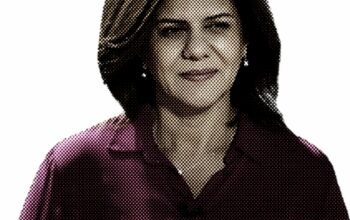As humans, sometimes we think irrationally. The ways we act, we treat other people, we make decisions may be influenced by some peculiar processes that happen in our brains, known as Cognitive Biases. “Cognitive biases are systematic cognitive dispositions or inclinations in human thinking and reasoning that often do not comply with the tenets of logic, probability reasoning, and plausibility. These intuitive and subconscious tendencies are at the basis of human judgment, decision making, and the resulting behavior” (Korteling; Toet, 2022: 610).
In simple words, a bias is an involuntary error that makes us process information incorrectly, affecting the way we make decisions and the way we judge things. Cognitive bias is supposed to help us decide quickly, but it can lead us to unfair judgement. There are two types of bias: conscious and unconscious. The first type, also called explicit bias, is intentional. The second one is unintentional.
There are different factors that can cause cognitive bias. Some of them are:
- Heuristic: “a mental shortcut that allows an individual to make a decision, pass judgment, or solve a problem quickly and with minimal mental effort” (Psychology Today).
- Social pressure.
- Emotions.
People can have many types of cognitive bias caused by the factors that we mentioned earlier. Let’s take a look at some of the most common cognitive biases.
- The first one is Confirmation Bias. It is defined as “the tendency to gather evidence that confirms preexisting expectations, typically by emphasizing or pursuing supporting evidence while dismissing or failing to seek contradictory evidence” (APA Dictionary of Psychology). This type of bias may lead people to ignore a whole amount of information because it does not support their opinion.
- The Dunning-Kruger Effect occurs when people overestimate their competence in a field, despite not having enough knowledge or information. It also occurs when people that have a lot of expertise in one field, believe that a task is easy for everyone.
- Ingroup bias is “the tendency to favor one’s own group, its members, its characteristics, and its products, particularly in reference to other groups” (APA Dictionary of Psychology). This means that people are more likely to support the people from their own social group.
- Self-serving bias is “the tendency to interpret events in a way that assigns credit for success to oneself but denies one’s responsibility for failure, which is blamed on external factors (APA Dictionary of Psychology)”. This type of bias is a device that people may unconsciously use to maintain their self-esteem.
- Group-serving bias is “any one of a number of cognitive tendencies that contribute to an overvaluing of one’s group, particularly the tendency to credit the group for its successes but to blame external factors for its failures (APA Dictionary of Psychology)”. It is similar to self-serving bias, as it serves as a device to maintain a group’s prestige.
- Availability Heuristic or availability bias is described as “a common strategy for making judgments about likelihood of occurrence in which the individual bases such judgments on the salience of the information held in his or her memory about the particular type of event (APA Dictionary of Psychology)”. In our daily life, we do not use complex thought strategies. Heuristics are shortcuts to save time and cognitive resources, with the risk of not always finding the best solution.
- Fundamental attribution error “is the tendency to overestimate the degree to which an individual’s behavior is determined by his or her abiding personal characteristics, attitudes, or beliefs and, correspondingly, to minimize the influence of the surrounding situation on that behavior” (APA Dictionary of Psychology). This bias implies that we judge people according to unfounded stereotypes but expect them not to do it with us.
- Hindsight bias is described as “the tendency, after an event has occurred, to overestimate the extent to which the outcome could have been foreseen (APA Dictionary of Psychology)”. For example, students believing that they can predict the outcome of their exams, therefore affecting how much they study.
- Anchoring bias is “the tendency, in forming perceptions or making quantitative judgments under conditions of uncertainty, to give excessive weight to the starting value (or anchor), based on the first received information or one’s initial judgment (APA Dictionary of Psychology)”. This is also called anchoring-and-adjustment heuristic or anchoring effect.
- Optimism bias occurs when we are more likely to predict a positive outcome.
- Pessimism bias occurs when we are more likely to predict a negative outcome.
- Halo effect is “a rating bias in which a general evaluation (usually positive) of a person, or an evaluation of a person on a specific dimension, influences judgments of that person on other specific dimensions (APA Dictionary of Psychology)”. For example, when we consider a person good-looking, we also consider them a good person.
- Status quo bias is a tendency to prefer things in their current state when there is any type of change that might happen. This happens to people that fear change or find it hard to process.
As all these definitions say, cognitive biases can affect our decisions in quite a heavy way but the more we learn about them, the more we learn out not to bypass them. Sometimes it might only take an extra moment of thought, while some other times it might need us to dig deeper into their causes. However, there can be many ways not to get caught in the traps that our own brain sets for us and being aware of them is a big first step. Once we know about them, we must be ready to doubt the way we think and change some of our opinions.
Francesca Cuomo
References:
Korteling J.E., Toet A, Cognitive Biases, in Encyclopedia of Behavioral Neuroscience, 2nd edition (Second Edition), Editor(s): Sergio Della Sala, Elsevier, 2022, Pages 610-619.
Heuristics, Psychology Today https://www.psychologytoday.com/us/basics/heuristics (last access 21/06/2022).
Ruhl C., What Is Cognitive Bias? (2021), https://www.simplypsychology.org/cognitive-bias.html (last access 21/06/2022).
How to Identify Cognitive Bias: 12 Examples of Cognitive Bias (2020), MasterClass, https://www.masterclass.com/articles/how-to-identify-cognitive-bias#12-examples-of-cognitive-bias (last access 22/06/2022).



